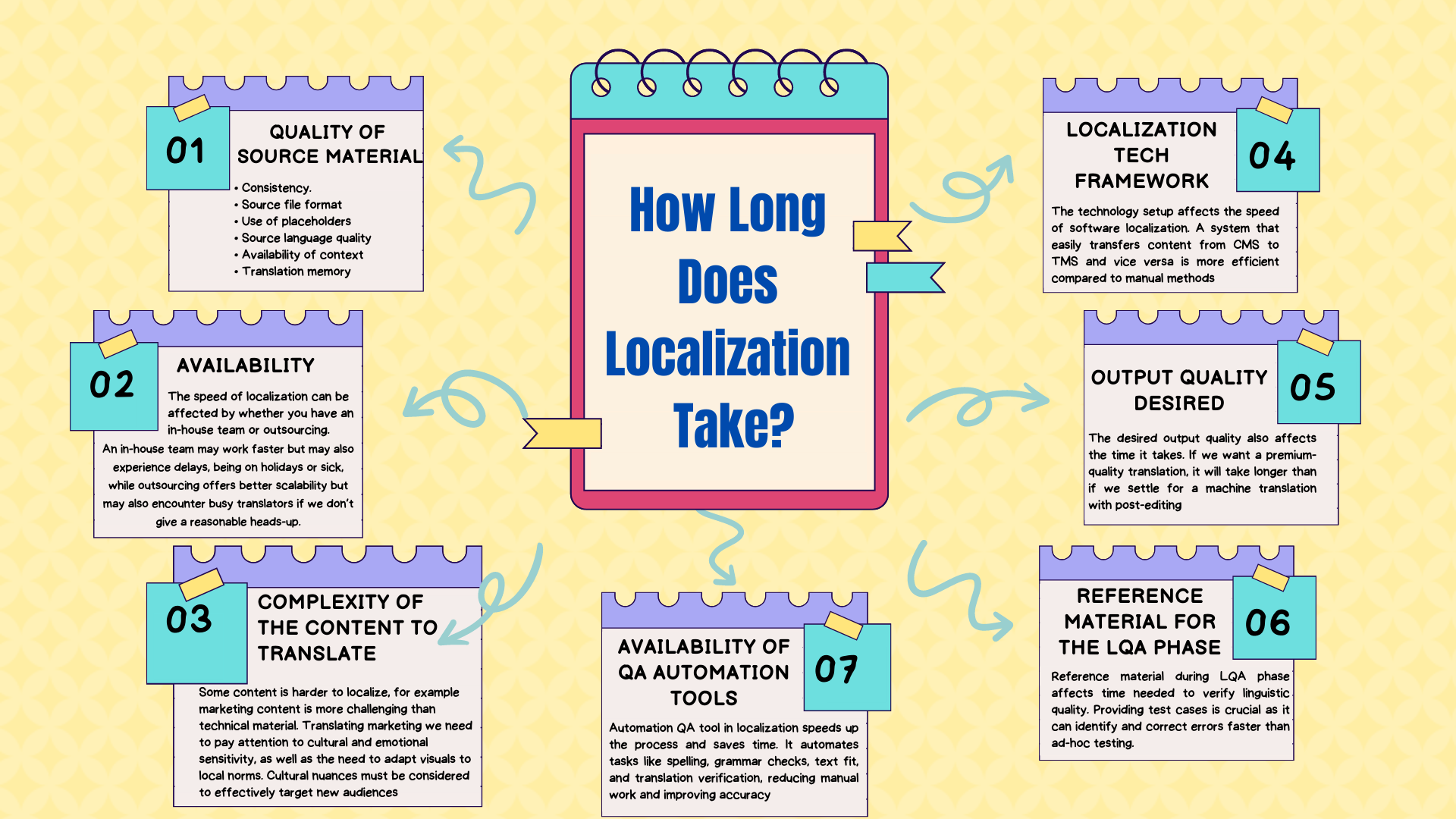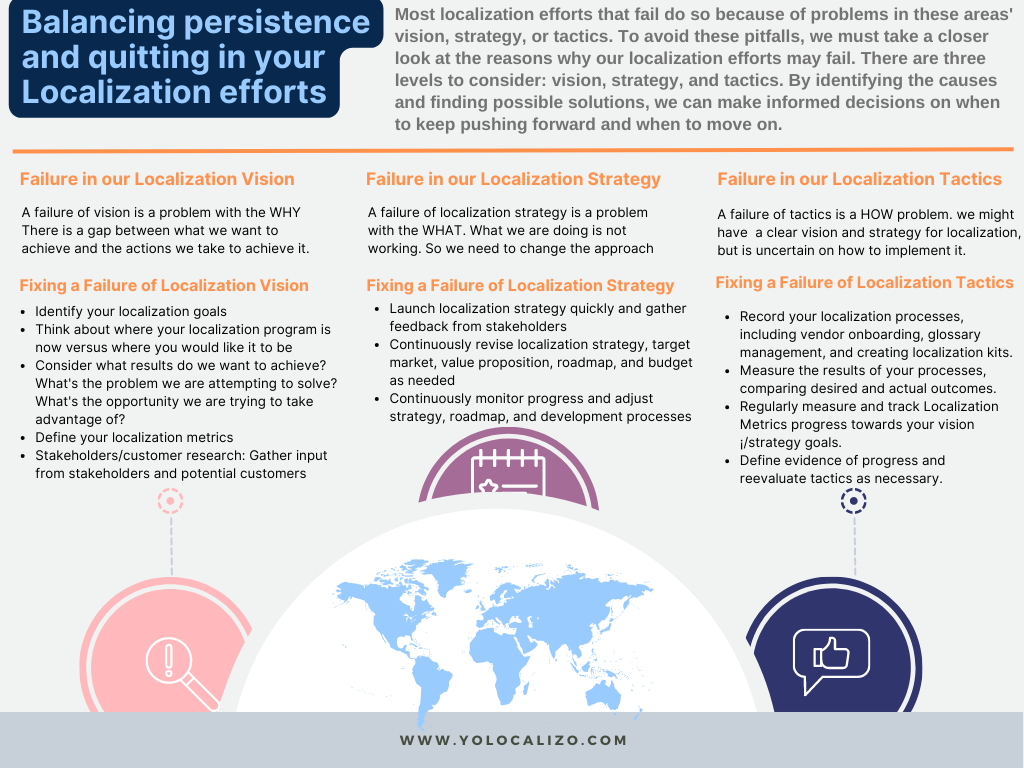Taking control of our Localization future
January. A new year begins, and every year around this time, many of us set out to achieve new things. I am not a big fan of habits as I consider them to be temporary solutions.
I prefer the idea of creating systems (Forget About Setting Goals. Focus on This Instead). I like systems because they help us influence our mindset.
A mindset is a set of beliefs, attitudes, and assumptions that shape our perception, behavior, and decision-making. It can be described as a mental framework or worldview that a person holds, and it can be influenced by past experiences, cultural and societal norms. Mindset can also be described as a way of thinking and approach towards life, which can be fixed or growth mindset.
A better mindset can lead to greater joy and resourcefulness, and one of the mindsets that can help the most is that of continuous learning, of becoming eternal learners.
The world we live in is very changing, pandemics, wars, the rise of AI that we are starting to see these weeks, hello ChatGPT! and the best way we have to control and influence a little bit our future is through learning and adopting that mindset of continuous learning.
And it is in this environment where a Localization personal development plan can help us to advance in our career and achieve our goals.
How to create your Localization Personal Development plan in 3 phases.
Click HERE to download the infographic
The career and industry of the localization professional is somewhat peculiar as the variety of roles and backgrounds of the people who perform them is very wide. I know people who have studied law and ended up as Localization Project Managers. There are many cases where you study something that has nothing to do with localization and end up working in the industry... as I write this I just remembered the name of Kate Edwards, Kate is a Geographer and has earned a well-deserved reputation helping video game companies in culturalization tasks.
There are many options and roles in the industry, there are many skills that can help us match what companies need and what we can offer. But we have to take the time every year and reflect on where we are, where we want to be and the gaps we need to close. This is where the idea of a Localization Personal Development Plan comes into play.
A Localization Personal Development Plan is a document outlining goals, strategies, and action steps for self-improvement, covering short-term objectives to long-term career aspirations, and various aspects of life. It serves as a tool for self-reflection, goal setting, and tracking progress towards personal and professional development, helping an individual to take control of their own learning and development and identify opportunities for growth.
For a PDP to be effective, it is necessary to go through 3 phases and use certain tools/frameworks or strategies that help us to reflect. Let me give you some ideas on how to create your Localization Personal Development Plan. I hope you find it useful!
Phase 1: Who am I?
Self-awareness is important when creating our Localization Personal Development Plan as it helps us understand our personal values, aspirations, and what is truly important to us. It allows us to set goals aligning with our values and identify strengths and weaknesses. Tools for who I am:
Self-assessment tools: Use self-assessment tools such as the Myers-Briggs Type Indicator (MBTI), DISC or the StrengthsFinder to gain insights into your personality, values, strengths, and weaknesses.
Journaling: Keep a journal and take time to reflect on your thoughts, feelings, and experiences. This can help you identify patterns and themes in your life and gain a deeper understanding of yourself.
SWOT analysis: Use SWOT analysis to identify your strengths, weaknesses, opportunities, and threats. This can help you identify areas where you need to focus your efforts.
The My Motivating Drivers strategy. This is my favorite, so let me explain this one in more detail.
My Motivating Drivers strategy is a tool for identifying what drives and motivates an individual when creating a professional personal development plan. It helps understand personal values and aspirations and align them with professional goals. It involves identifying core values and drivers, which are most important to the individual and give a sense of purpose. These drivers can be broken down into categories such as personal, professional, and organizational values. Once identified, they can be used to set goals and create a plan that aligns with these values and motivations. When we make the list of my motivating drivers we have to follow 3 steps:
We have to brainstorm and write down all the important things to us.
Prioritization: Once we have identified our important values and drivers, we must prioritize them. We must decide which values are most important to us, such as flexibility, working from anywhere or working in an office, working in a startup or established company, working individually, or leading a team. We can create a Top 5 list summarizing our most essential motivators. Evaluating our current situation on a scale of 1 to 10 is also important as it can reveal a mismatch between our values and our current reality.
Check-in with the future
Reflecting on where we want to be in our career is important because it helps us think about what we want to do. To help to discover that there are a couple of tools that are quite useful
Contacting your future self
Contacting your future self is a technique for setting and achieving goals, popularized by coach Tony Robbins. It involves creating a clear, detailed vision of one's future self, including physical shape, wealth, and professional achievements, to serve as motivation for achieving goals. The first step is to envision yourself in the future and ask yourself, "Where do I want to be in 3 years, 5 years or more?" Long-term goals are set and broken down into smaller, manageable steps to achieve them and create a roadmap for a personal development plan. It's a powerful way to identify our desired role in the localization industry and the skills, experiences, and type of organization we want to work for.
My ideal job
This tool helps us to reflect on a wide range of factors that will impact our job satisfaction and career growth.
Questions we can ask ourselves to determine our ideal job are, for example
How much responsibility do we want in our role?
How much influence do we want to have in our role?
How much autonomy do we want in our role?
Do we prefer working alone or in a team?
What types of projects or activities are we interested in?
What experience do we want to gain?
What opportunities do we want in our job?
Where do we want to be based?
How much travel are we willing to do?
How important are organizational values to us?
Today I'm here; tomorrow, I want to be there
The title of this phase explains that it's all about understanding where we are now and where we want to be in the future to close the gap.
To help close the gap, several tools can be used:
The not-to-do list:
"Not-to-do" lists are often more effective than to-do lists for upgrading performance. The reason is simple: what we don't do determines what we can do.
The "not-to-do" list strategy is an integral part of a Localization personal development plan as it helps to identify activities, behaviors, or habits that may be holding us back from achieving our goals.
By identifying what we should stop doing, we can free up time and resources to focus on more productive activities that will lead to the desired results. When considering what to stop doing, it's important to think about things that are not working or helping. These can be activities that we have been putting a lot of effort into but haven't seen any significant results.
Our stakeholder map
Creating a stakeholder map is an important step in developing a successful personal development plan. This map is a visual representation of the individuals in our network who might play a key role in our success. These individuals can include colleagues, mentors, or managers in our company, and even friends and family members if we see value in it. Creating a stakeholder map is important to identify those stakeholders who can help us advance our career.
These individuals can help to open doors and provide opportunities for us within our organization.
They can also help you promote your work and accomplishments to others, leading to new opportunities and career advancement.
When you do this exercise, make a list with 2 columns: one for Enthusiastic Backer stakeholders and another one for Skeptic stakeholders.
Enthusiastic backers are key players in the success of our localization development and are willing to lend a hand in any way they can.
Skeptic stakeholders can play a critical role in our career development by acting as sounding boards for our ideas and feedback.
Gap Analysis
Gap analysis in career development is a process of evaluating and identifying areas of improvement in our current career path. It involves taking a step back, assessing our current skills and experiences, and identifying areas where we may lack knowledge or experience.
When conducting a gap analysis, it is crucial to consider the following questions:
What have we achieved so far in your Localization career?
This question helps to identify our strengths and accomplishments and areas where we may have excelled.
Where are there gaps in our development or experience?
This question helps to identify areas where you may need to improve or gain additional knowledge or experience.
What has worked well so far?
This question helps to identify strategies or methods that have been successful in our career and may be beneficial to continue to use.
What hasn’t worked?
This question helps to identify strategies or methods that have not been successful and may need to be changed or replaced.
What is stopping you from making progress on this?
This question helps identify any obstacles or barriers preventing you from achieving our career goals.
By conducting a gap analysis, we can better understand your current career status and identify opportunities for growth and development. It can also help you to set realistic career goals and develop a plan to achieve them.
Summarizing
As they say, if you don't take the time to reflect on your goals, priorities, and what you want to do in life, you will probably end up doing it for someone who does.
Creating a Localization personal development plan is crucial for reaching our professional aspirations. Reflecting on our interests, abilities, and objectives allows us to focus on what really matters and make knowledgeable choices about our careers.
Additionally, having a personal development plan helps us make the most of opportunities that come our way and work strategically to accomplish our goals. Whether we're seeking a career shift or simply looking to enhance our current role, a personal development plan is vital for achieving professional success.
Good luck!
@yolocalizo













Localizability has always been a challenge small issues in source content often lead to big problems later in translation. In this post, I explore how AI is giving localization teams a powerful new way to improve source quality, reduce friction, and create better content for every market right from the start.